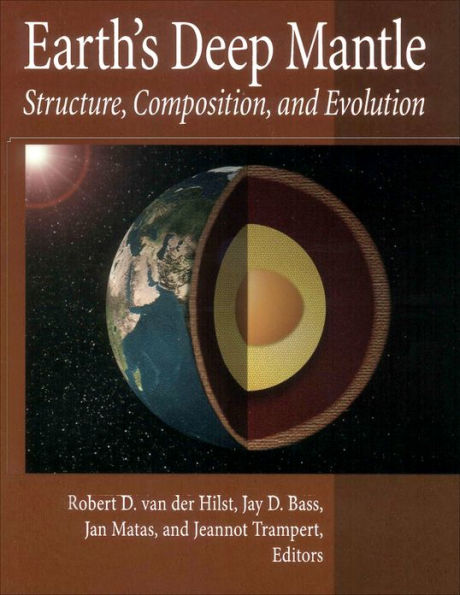Table of Contents
Preface
Robert D. van der Hilst, Jay D. Bass, Jan Matas, and Jean not Trampert vii
Earth's Deep Mantle: Structure, Composition, and Evolution—An Introduction Robert D. van der Hilst, Jay D. Bass, Jan Matas, and Jeannot Trampert 1
Noble Gas Models of Mantle Structure and Reservoir Mass Transfer Darrell Harrison and Chris J. Ballentine 9
The Survival of Mantle Geochemical Heterogeneities Francis Albarede 27
Towards a Quantitative Interpretation of Global Seismic Tomography Jeannot Trampert and Robert D. van der Hilst 47
Seismic Modeling Constraints on the South African Super Plume Don V. Helmberger and Sidao Ni 63
Numerical and Laboratory Studies of Mantle Convection: Philosophy, Accomplishments, and Thermochemical Structure and Evolution Paul J. Tackley, Shunxing Xie, Takashi Nakagawa, and John W. Hern Iund 83
Heterogeneous Lowermost Mantle: Compositional Constraints and Seismological Observables H. Samuel, C.G. Farnetani, and D, Andrault 101
Numerical Study of the Origin and Stability of Chemically Distinct Reservoirs Deep in Earth's Mantle P. van Thienen, J. van Summeren, R. D. van der Hilst, A. P. van den Berg, and N. J. Vlaar 117
Self-Gravity, Self-Consistency, and Self-Organization in Geodynamics and Geochemistry Don L Anderson 137
The Role of Theoretical Mineral Physics in Modeling the Earth's Interior Mark S. T. Bukowinski and Sofia Akber-Knutson 165
The Uncertain Major Element Bulk Composition of Earth's Mantle Q. Williams and E. Knittle 187
Highly Siderophile Elements: Constraints on Earth Accretion and Early Differentiation Kevin Righter 201
Mantle Oxidation State and Oxygen Fugacity: Constraints on Mantle Chemistry, Structure, and Dynamics Catherine A. McCammon 219
Thermochemical State of the Lower Mantle: New Insights From Mineral Physics James Badro, Guillaume Fiquet, and Frangois Guyot 241
Stability of MgSiOs Perovskite in the Lower Mantle Sang-Heon Shim 261
Synthetic Tomographic Images of Slabs From Mineral Physics Y. Ricard, E. Mattern, and J. Matas 283
Compositional Dependence of the Elastic Wave Velocities of Mantle Minerals: Implications for Seismic Properties of Mantle Rocks Sergio Speziale, Fuming Jiang, and Thomas S. Duffy 301
Recent Progress in Experimental Mineral Physics: Phase Relations of Hydrous Systems and the Role of Water in Slab Dynamics Fiji Ohtani 321




